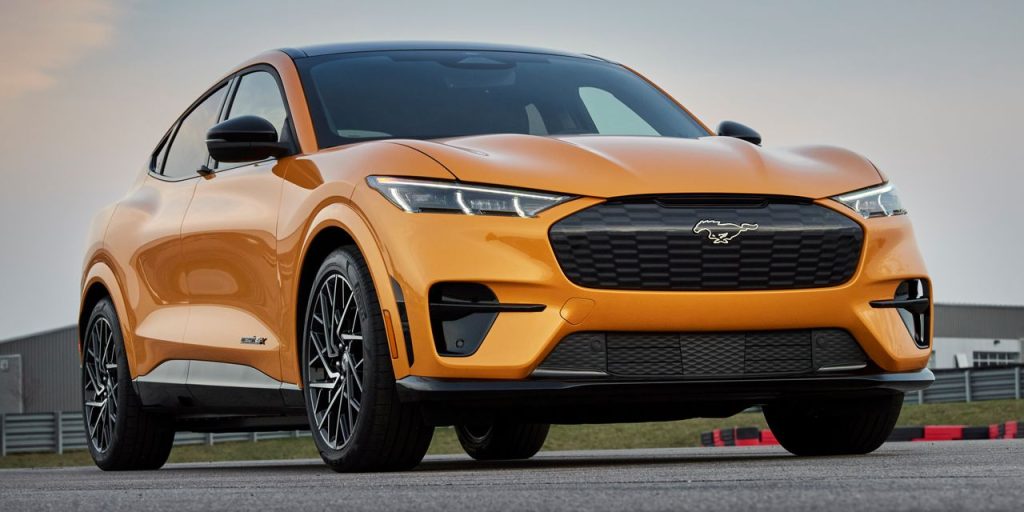There’s less than a week left to guarantee the full $7,500 electric-vehicle tax credit for some popular EV models that will soon no longer qualify.
But for would-be buyers who haven’t yet purchased their EV, securing one by April 18—the deadline to land the credit—won’t be easy.
The Internal Revenue Service has changed its rules on which EVs are eligible to receive the full tax credit, based on legislation included in the Inflation Reduction Act signed last summer. Fully eligible EVs must be assembled in North America and have batteries that largely run on critical minerals “extracted or processed” in the U.S. or a country with a free-trade agreement. Vehicles that comply with only one of the two requirements are eligible for half the credit.
The regulatory shift, which goes into effect on the 18th, has reduced the number of EVs eligible for the tax credit, impacting manufacturers and car dealerships. The IRS has yet to publish a more detailed list of qualifying models. But
Ford Motor
(ticker: F) last week said it was losing half of the tax credit for the Mustang Mach-E and E-Transit van.
General Motors
(GM) previously told Barron’s it expected a “number” of EVs to qualify for the full credit, and for the Chevy Bolt to qualify for some level of credit.
The IRS outlined the changes on March 31–leading to an uptick of led to of search activity on
Cars.com
(CARS). New EV searches increased about 4% in the first 10 days of April, compared with the final 10 days of March, a
Cars.com
spokeswoman tells Barron’s. Searches for Mustang Mach Es climbed about 8% in the first 10 days of April, compared with the final 10 days in March.
However, many drivers worked to secure EVs months ahead of the deadline.
Ford delivered 10,866 EVs in its first quarter, up 40% year-over-year, while General Motors delivered 20,670, up 4,400% from a year ago. (GM paused production of its popular Bolt in late 2021 and early 2022 due to battery problems.)
Tesla,
meanwhile, delivered 422,875 cars, a record for the company.
A Ford dealership in Sunnyvale, California, has sold close to 30 EVs this year, a stronger flow of sales than usual, a sales manager told Barron’s. Another dealership in Dallas, Texas, said it had also seen an uptick in EV demand in recent months.
That spike in demand could give last-minute buyers trouble.
EVs have been in high demand—and short supply—since the onset of the pandemic. After its sales run earlier this year, the Sunnyvale dealership, for instance, only has three EVs left.
According to EV website Electrifying.com, buyers are waiting for an average of 24 weeks for an EV. A Ford dealership in Great Neck, New York, said it could take up to eight months to get an EV from the factory to the dealer, compared with up to three months for a gas-fueled car.
The waiting period is a problem for people looking to take advantage of the full tax credit if their chosen vehicles will no longer qualify after the 18th.
“A vehicle’s eligibility for the new clean vehicle credit is generally based on the rules that apply as of the date a vehicle is placed in service, meaning the date the taxpayer takes delivery of the vehicle,” the IRS said in a fact sheet. “New clean vehicles placed in service on or after April 18, 2023 are subject to the critical mineral and battery component requirements even if the vehicle was ordered or purchased before April 18, 2023.”
So is the eleventh hour scramble for a new EV worth it? If you’re lucky enough to live close to a well-supplied dealer, it might be. Otherwise, you may be out of luck.
Ford stock is up 1.3% so far in April. The
S&P 500
is flat so far this month, while the
Dow Jones Industrial Average
has gained about 1.4%.
Write to Sabrina Escobar at sabrina.escobar@barrons.com
Read the full article here




